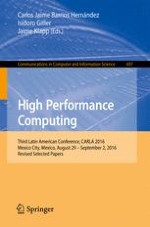2017 | Book
High Performance Computing
Third Latin American Conference, CARLA 2016, Mexico City, Mexico, August 29–September 2, 2016, Revised Selected Papers
Editors: Carlos Jaime Barrios Hernández, Isidoro Gitler, Jaime Klapp
Publisher: Springer International Publishing
Book Series : Communications in Computer and Information Science
